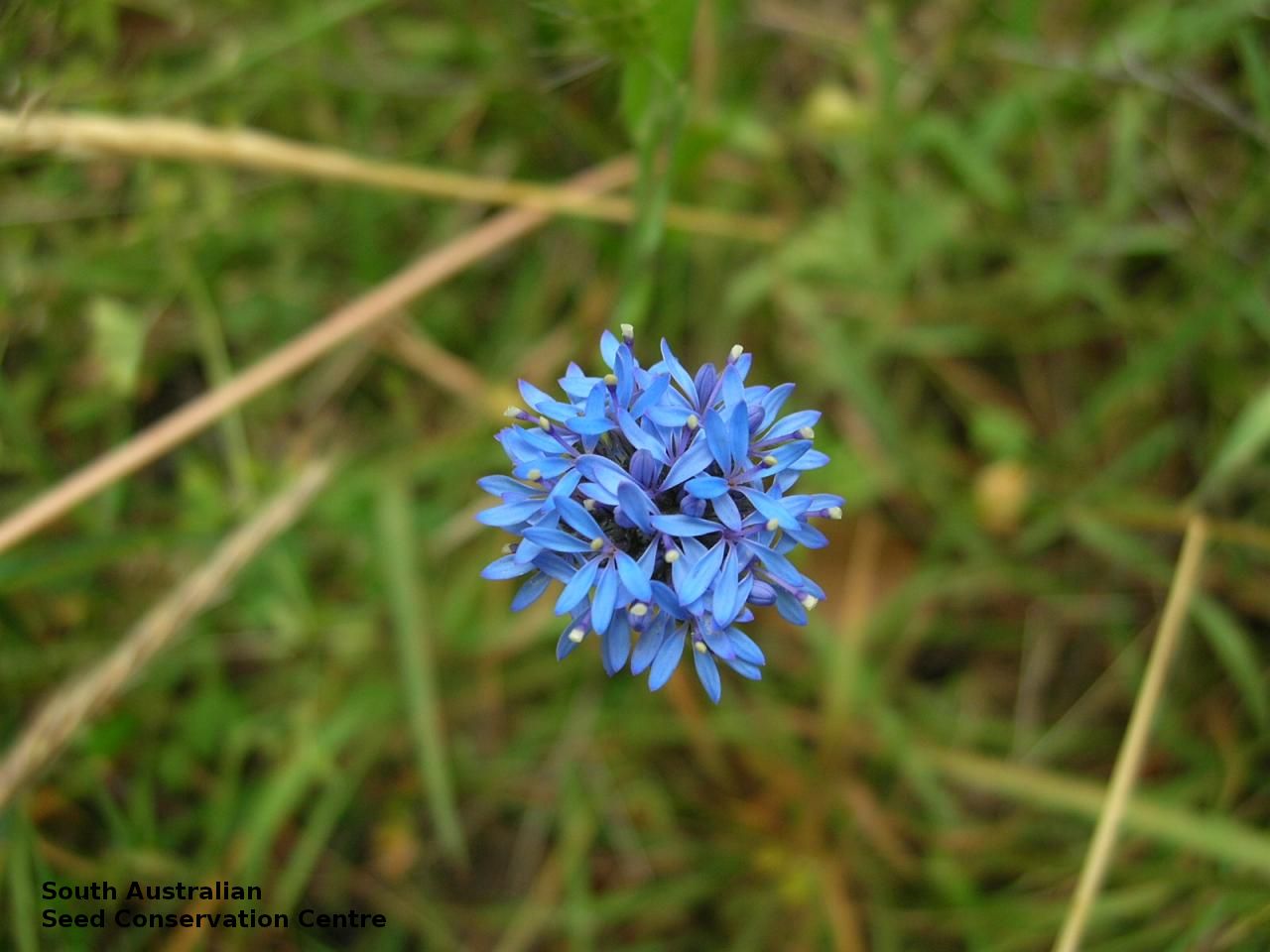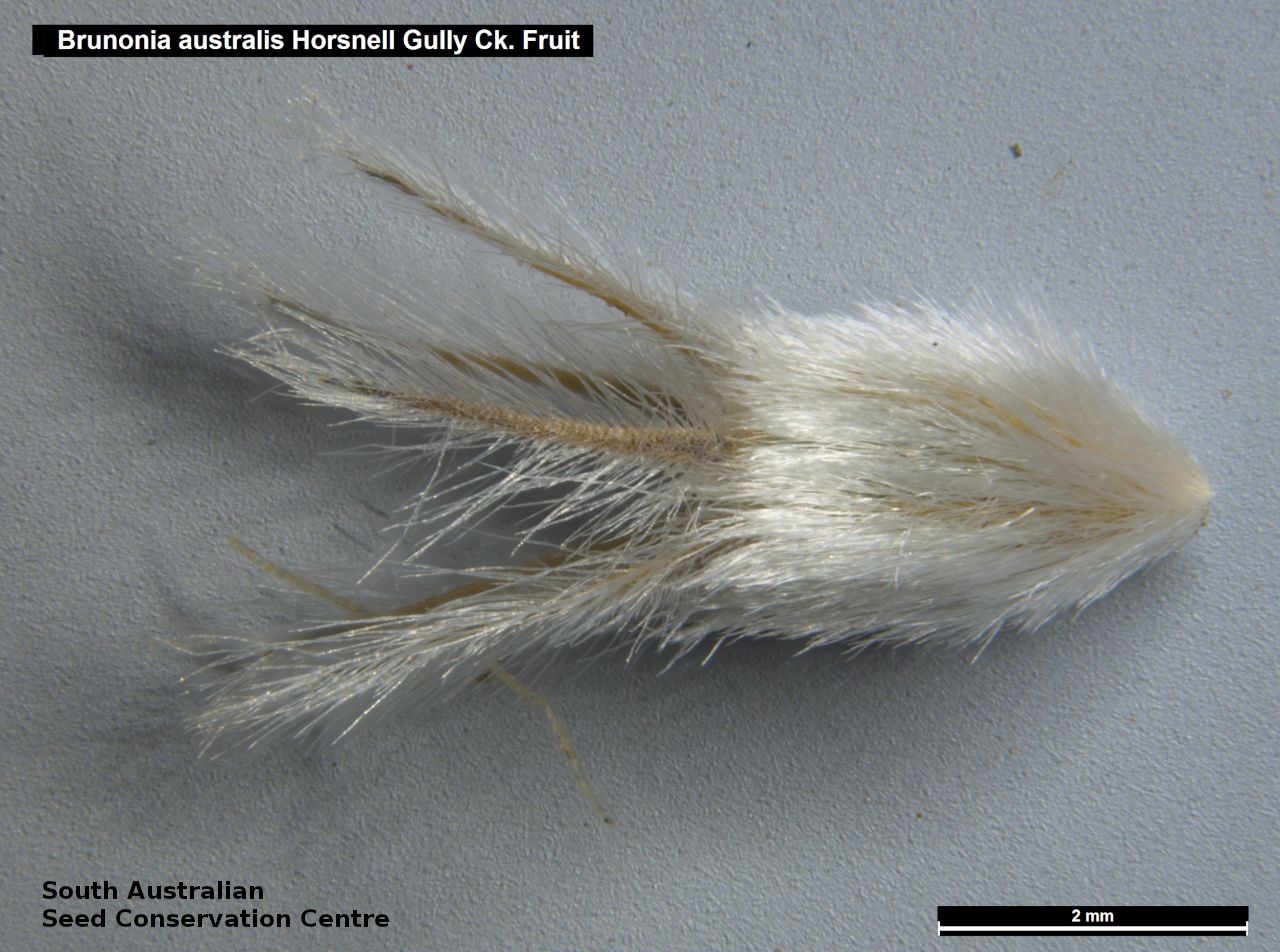Blue pincushion,
Tjul#pun-tjul#punpa
Display all 14 images














Regional Species Conservation Assessments per IBRA subregion.


Least concern
Near threatened
Rare
Vulnerable
Endangered
Critically endangered
Extinct
Data deficient
Adelaide
Arkaroola
Ceduna
Coober Pedy
Hawker
Innamincka
Marla
Marree
Mount Gambier
Oodnadatta
Renmark
Wudinna
Keith
Yunta
Display IBRA region text
| Mount Gambier (SVP02) | Southern Volcanic Plain | Least Concern |
| Bridgewater (NCP01) | Naracoorte Coastal Plain | Rare (IUCN: RA d(ii)) [used to be more widespread] |
| Glenelg Plain (NCP02) | | Least Concern |
| Lucindale (NCP03) | | Least Concern |
| Tintinara (NCP04) | | Rare (IUCN: RA d(i,ii)) |
| Kangaroo Island (KAN01) | Kanmantoo | Rare (IUCN: RA d(i,ii)) [only 1 pop ever found, 1995 on Pioneeer Bend Rd; disjunct; could be 2 taxa involved] |
| Fleurieu (KAN02) | | Least Concern |
| Mount Lofty Ranges (FLB01) | Flinders Lofty Block | Least Concern |
| Broughton (FLB02) | | Vulnerable (IUCN: VU B2ab(i,ii,iii)) (Probable Decline) |
| Murray Lakes and Coorong (MDD03) | Murray Darling Depression | Rare (IUCN: RA d(i,ii)) [edge of range] |
| Lowan Mallee (MDD04) | | Near Threatened |
| Wimmera (MDD05) | | Rare (IUCN: RA d(i,ii)) [edge of range] |
| Gawler Volcanics (GAW02) | Gawler | Vulnerable (IUCN: VU B2ab(i,ii,iii)) (Probable Decline) [southern limit] |
| Kingoonya (GAW05) | | Least Concern [grazing] |
| Commonwealth Hill (GAW08) | | Rare (IUCN: RA d(ii)) |
| Maralinga (GVD03) | Great Victoria Desert | Least Concern |
| Kintore (GVD04) | | Least Concern |
| Tallaringa (GVD05) | | Least Concern |
| Yellabinna (GVD06) | | Least Concern |
| Carlisle (NUL01) | Nullarbor | Rare (IUCN: RA d(i,ii)) |
| Breakaways (STP01) | Stony Plains | Rare (IUCN: RA d(i,ii)) |
| Oodnadatta (STP02) | | Rare (IUCN: RA d(ii)) |
| Mann-Musgrave Block (CER01) | Central Ranges | Near Threatened |
| Watarru (CER02) | | Least Concern |
| Everard Block (CER03) | | Near Threatened |
| Tieyon (FIN03) | Finke | Rare (IUCN: RA d(ii)) [limited habitat ] |
| Pedirka (FIN04) | | Near Threatened [poorly collected] |
| Mount Gambier (SVP02) | Southern Volcanic Plain | Least Concern |
| 4 of 4 subregions | Naracoorte Coastal Plain | Least Concern , Rare |
| 2 of 2 subregions | Kanmantoo | Least Concern , Rare |
| 2 of 6 subregions | Flinders Lofty Block | Least Concern , Vulnerable |
| 3 of 6 subregions | Murray Darling Depression | Near Threatened , Rare |
| 3 of 8 subregions | Gawler | Least Concern , Rare , Vulnerable |
| 4 of 4 subregions | Great Victoria Desert | Least Concern |
| Carlisle (NUL01) | Nullarbor | Rare (IUCN: RA d(i,ii)) |
| 2 of 7 subregions | Stony Plains | Rare |
| 3 of 3 subregions | Central Ranges | Least Concern , Near Threatened |
| 2 of 2 subregions | Finke | Near Threatened , Rare |
Botanical art
Kath Alcock paintings: 3
Prior names
Brunonia sericea
Common names
Blue pincushion
Tjul#pun-tjul#punpa
Etymology
Brunonia named after Robert Brown (1773-1858), a Scottish botanist and palaeobotanist who made important contributions to botany largely through his pioneering use of the microscope and accompany Matthew Flinders' expedition to Australia. Austalis from Latin meaning southern, referring to the geographical distribution of the species in southern hemisphere.
Distribution and status
Found in north-west, Mount Lofty Ranges, Kangaroo Island and the South-east in South Australia, growing in dry sclerophyll forest, woodland and open sand dune communities. Also found in all states. Native. Common in South Australia. Rare in Tasmania. Common in the other States.
Herbarium regions: North Western, Lake Eyre, Gairdner-Torrens, Northern Lofty, Southern Lofty, South Eastern, Green Adelaide
NRM regions: Adelaide and Mount Lofty Ranges, Alinytjara Wilurara, Northern and Yorke, South Australian Arid Lands, South East
AVH map: SA distribution map (external link)
Plant description
Hairy, perennial herb with a cluster of basal leaves. Leaves elliptic to spathulate, to 10 cm long, green with silky hairs on both surfaces. Inflorescence round head on a long stalk to 30 cm high, with mid to deep blue flowers. Flowering between October and December. Fruits are pale brown round heads with numerous shuttle-cock like seeds. Seeds are brown seed to 3 mm long. Seed embryo type is linear fully developed.
Seed collection and propagation
Collect seeds between December and February. Collect mature capsules, those that are turning a pale straw colour and contain brown seeds. Can collect individual capsules or break off the whole head. Place the capsules in a tray and leave to dry for one to two weeks. Then rub the capsules gently by hand to dislodge the seeds. Use a sieve to separate the unwanted material. Store the seeds with a desiccant such as dried silica beads or dry rice, in an air tight container in a cool and dry place. Seed viability is usually high.
| Location | No. of seeds
(weight grams) | Number
of plants | Date
collected | Collection number
Collection location | Date
stored | % Viability | Storage
temperature | | BGA | 1,368 (2.19 g) | 100+ | 13-Jan-2005 | MKJ66
Southern Lofty | 28-Mar-2006 | 100% | -18°C |
Location: BGA — the seeds are stored at the Adelaide Botanic Gardens, MSB — the seeds are stored at the Millennium Seed Bank, Kew, England.
Number of plants: This is the number of plants from which the seeds were collected.
Collection location: The Herbarium of South Australia's region name.
% Viability: Percentage of filled healthy seeds determined by a cut test or x-ray.













